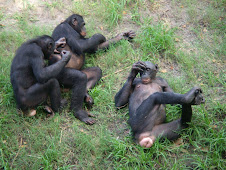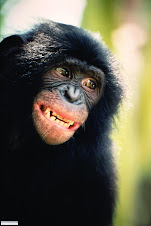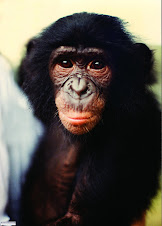 During the nineties when these pictures were taken, paranoia in Zaire (now the Democratic Republic of the Congo) was at a high level. In the culture, taking photographs was stealing souls and it was also outlawed in public areas. To obtain these Polaroids, I had one of my people go to the port market called "Ndolo" to document the types of food that were available. They asked for permission to take Polaroids and they would always hand out another one as a gift.
During the nineties when these pictures were taken, paranoia in Zaire (now the Democratic Republic of the Congo) was at a high level. In the culture, taking photographs was stealing souls and it was also outlawed in public areas. To obtain these Polaroids, I had one of my people go to the port market called "Ndolo" to document the types of food that were available. They asked for permission to take Polaroids and they would always hand out another one as a gift.The upper left photo shows a basin filled with live caterpillars called "mpombe" (singular, "epombe"). The freshly steamed mpombe are piled on the cloth in small packets, and priced to sell, to be cooked into other dishes. The seller remarked that this caterpillar only was found in one kind of tree, from the savannas.
The upper right photo shows cocoons filled with live caterpillars called "belanga," from the rain forest. As the seller explained, belanga eat leaves when they are small. When they get big, they move in a single-file line and go up in the trees, where they make the cocoons that are harvested and transported to the capital, for sale. Some people put baskets in trees where the caterpillars will nest.
Two things that were interesting about belanga was that seller said that they lined up and climbed trees at the same time -- he said it was around two in the afternoon. He also remarked that the belanga never pooped in their cocoons. This was a preferred food, because it was very fatty.
The lower left image was of fish being steamed in a "liboke," or tied up basket of leaves, over a grill. The soupy fish or eel chunks combined with onions and hot peppers kept the leaves wet enough so they did not burn in the heat from the fire. Liboke was the "fast food" for populations in towns and cities.
The final Polaroid was of a commodity called "bushmeat," or meat hunted in the forest and transported distances to be sold. The carcass is a smoked monkey that came by small boat into the port. It looks flattened because the organs had been removed and the body cavity had been opened and spread by wooden sticks for smoking. Meat thus prepared would keep for a couple of weeks, although it might need a "freshening" up by additional smoking. Smoked meat was rehydrated for preparation. Because it was expensive, smoked meat was added in small pieces to other dishes, such as greens.













No comments:
Post a Comment